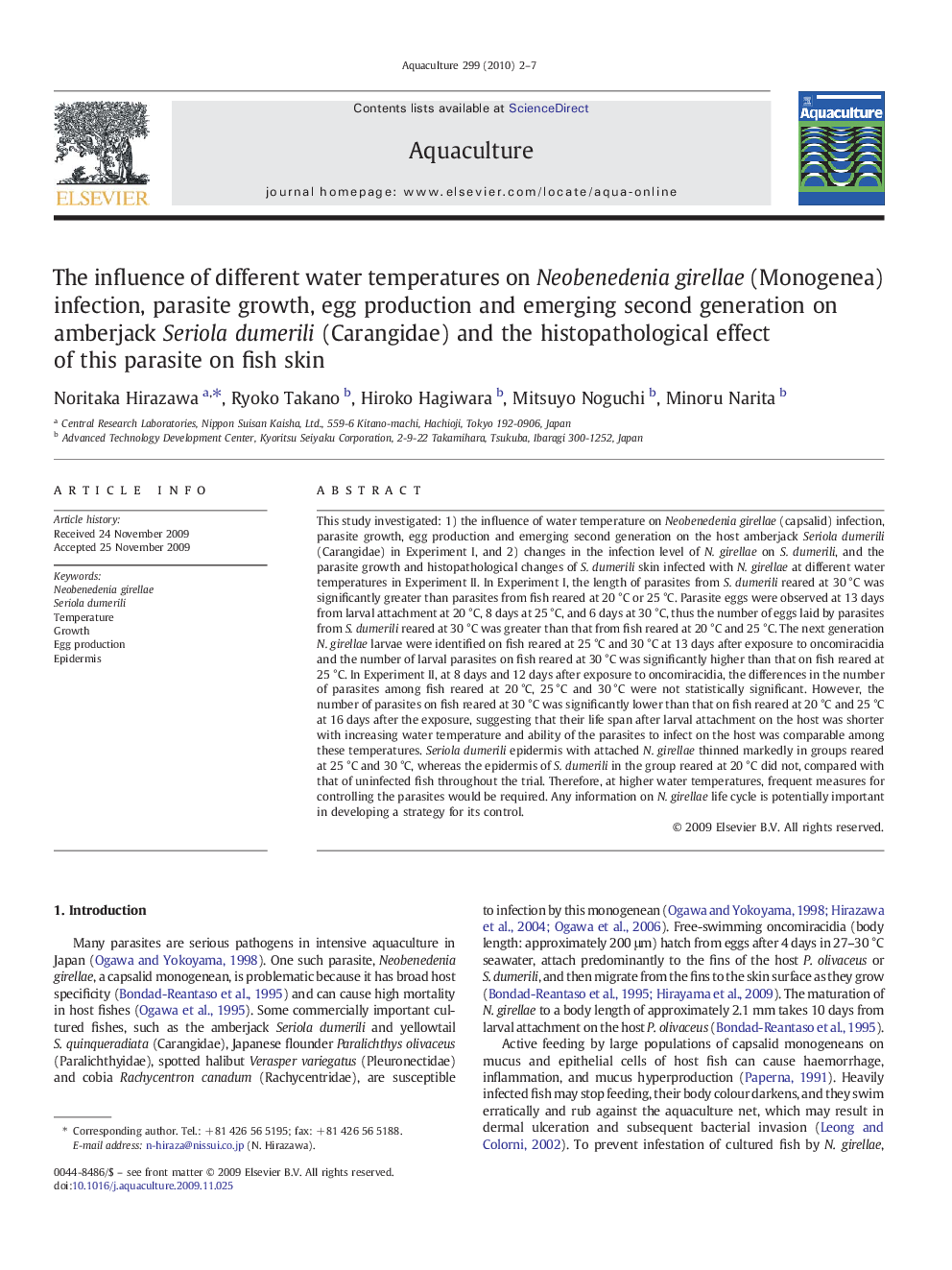| کد مقاله | کد نشریه | سال انتشار | مقاله انگلیسی | نسخه تمام متن |
|---|---|---|---|---|
| 2423764 | 1552930 | 2010 | 6 صفحه PDF | دانلود رایگان |

This study investigated: 1) the influence of water temperature on Neobenedenia girellae (capsalid) infection, parasite growth, egg production and emerging second generation on the host amberjack Seriola dumerili (Carangidae) in Experiment I, and 2) changes in the infection level of N. girellae on S. dumerili, and the parasite growth and histopathological changes of S. dumerili skin infected with N. girellae at different water temperatures in Experiment II. In Experiment I, the length of parasites from S. dumerili reared at 30 °C was significantly greater than parasites from fish reared at 20 °C or 25 °C. Parasite eggs were observed at 13 days from larval attachment at 20 °C, 8 days at 25 °C, and 6 days at 30 °C, thus the number of eggs laid by parasites from S. dumerili reared at 30 °C was greater than that from fish reared at 20 °C and 25 °C. The next generation N. girellae larvae were identified on fish reared at 25 °C and 30 °C at 13 days after exposure to oncomiracidia and the number of larval parasites on fish reared at 30 °C was significantly higher than that on fish reared at 25 °C. In Experiment II, at 8 days and 12 days after exposure to oncomiracidia, the differences in the number of parasites among fish reared at 20 °C, 25 °C and 30 °C were not statistically significant. However, the number of parasites on fish reared at 30 °C was significantly lower than that on fish reared at 20 °C and 25 °C at 16 days after the exposure, suggesting that their life span after larval attachment on the host was shorter with increasing water temperature and ability of the parasites to infect on the host was comparable among these temperatures. Seriola dumerili epidermis with attached N. girellae thinned markedly in groups reared at 25 °C and 30 °C, whereas the epidermis of S. dumerili in the group reared at 20 °C did not, compared with that of uninfected fish throughout the trial. Therefore, at higher water temperatures, frequent measures for controlling the parasites would be required. Any information on N. girellae life cycle is potentially important in developing a strategy for its control.
Journal: Aquaculture - Volume 299, Issues 1–4, February 2010, Pages 2–7